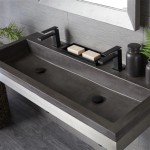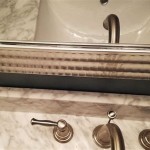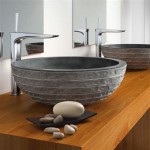How To Fix Low Hot Water Pressure In Bathroom Sink
Low hot water pressure in a bathroom sink can be a frustrating issue, impacting everyday tasks such as washing hands, shaving, and brushing teeth. Identifying the potential causes and implementing appropriate solutions is crucial to restoring optimal water flow. This article aims to provide a comprehensive guide on diagnosing and resolving common problems that contribute to low hot water pressure in a bathroom sink.
Identifying Potential Causes
Before attempting any repairs, it’s essential to systematically identify the potential causes of the low hot water pressure. Several factors can contribute to this issue, ranging from simple fixes to more complex plumbing problems. A thorough assessment will help narrow down the possibilities and guide the troubleshooting process.
One of the initial steps is to determine if the low water pressure is isolated to the hot water side of the bathroom sink or if it affects both the hot and cold water. If the low pressure is only present in the hot water, the problem is likely related to the hot water supply line specific to the sink or the water heater itself. If both hot and cold water exhibit low pressure, the issue may stem from a more widespread problem affecting the entire house's water supply.
Mineral buildup is a common culprit, particularly in areas with hard water. Over time, minerals such as calcium and magnesium can accumulate inside pipes, faucets, and showerheads, restricting water flow. This buildup can significantly reduce water pressure, especially in older plumbing systems.
Another potential cause is a partially closed or faulty shut-off valve. Each fixture typically has shut-off valves located under the sink, allowing the water supply to be turned off for maintenance or repairs. If one of these valves is not fully open or is malfunctioning, it can restrict the water flow to the sink. Shut-off valves can also corrode and seize over time, further impeding water pressure.
Clogged aerators can also contribute to low water pressure in the bathroom sink. This is because the aerator, which is usually screwed onto the faucet tip, mixes air with the water stream to create a smoother, non-splashing flow. Over time, mineral deposits and debris can accumulate in the aerator screen, reducing the volume of water that can pass through.
Furthermore, issues with the hot water heater can impact hot water pressure. Sediment buildup at the bottom of the tank can reduce the heater's efficiency and decrease the overall hot water supply. A faulty dip tube, which carries cold water to the bottom of the tank for heating, can also cause inconsistent water pressure.
Finally, leaks in the hot water plumbing system can lead to a drop in pressure. Even small leaks can significantly reduce the amount of water reaching the bathroom sink, especially if the leak is located before the sink in the plumbing line. Check for damp spots or water stains around pipes and connections, as these indicate a potential leak. Leaks located in other parts of the house can also affect water pressure at the bathroom sink.
Troubleshooting Steps
Once the potential causes have been identified, a systematic approach to troubleshooting can help pinpoint the exact problem and guide the repair process. The following steps will assist in diagnosing and resolving low hot water pressure in a bathroom sink.
The first step involves inspecting the shut-off valves located under the sink. Ensure that both the hot and cold water valves are fully open. If the valves are corroded or appear to be malfunctioning, try turning them off and then fully back on. In some cases, this simple action can dislodge any debris that may be obstructing the flow. If the valves are stiff or difficult to turn, they may need to be replaced.
Next, check the aerator for clogs. Unscrew the aerator from the faucet tip and inspect it for mineral deposits, sediment, or other debris. Clean the aerator by rinsing it under running water or soaking it in a solution of vinegar and water. Use a small brush, such as an old toothbrush, to scrub away any stubborn deposits. Once the aerator is clean, reassemble it and test the water pressure. If the pressure improves significantly, the aerator was likely the primary cause of the problem.
Inspect the flexible supply lines that connect the shut-off valves to the faucet. These lines can become kinked or twisted, restricting water flow. Straighten any kinks and ensure that the lines are not obstructed. If the supply lines are old or damaged, consider replacing them with new ones. Over time, these lines can deteriorate, leading to leaks or reduced water pressure.
Examine the faucet cartridge or valve. In many modern faucets, a cartridge controls the flow of water. Over time, these cartridges can become clogged with mineral deposits or debris, reducing water pressure. Remove the faucet handle and access the cartridge according to the manufacturer's instructions. Clean the cartridge thoroughly or, if necessary, replace it with a new one. For older faucets with separate hot and cold water handles, the valve seats and stems may require cleaning or replacement.
If the issue persists after addressing the faucet and supply lines, the problem may lie within the hot water heater. In this case, it would be prudent to flush the hot water heater to remove sediment buildup. This involves draining the tank and allowing the sediment to flow out. The specific procedure will vary depending on the type of water heater, so it is crucial to consult the manufacturer's instructions or seek assistance from a qualified plumber.
Finally, if none of the above steps resolve the low hot water pressure, a leak in the hot water plumbing system is most likely the primary factor. It is essential to carefully inspect all visible pipes and connections for any signs of leaks, such as dampness or water stains. If a leak is suspected, it should be addressed promptly to prevent further damage and restore optimal water pressure. If the leak is not easily accessible or if the plumbing system is complex, it is best to consult a professional plumber for assistance.
Preventative Measures
While addressing the immediate problem of low hot water pressure is essential, implementing preventative measures can help avoid future occurrences and maintain optimal water flow in the bathroom sink. Regular maintenance and proactive steps can significantly reduce the risk of mineral buildup, clogs, and other issues that contribute to low pressure.
One of the most effective preventative measures is to install a water softener. Water softeners remove minerals such as calcium and magnesium from the water supply, reducing the likelihood of mineral buildup in pipes, faucets, and showerheads. This can significantly improve water pressure and extend the lifespan of plumbing fixtures.
Regularly flush the hot water heater to remove sediment buildup. The frequency of flushing will depend on the water quality in the area, but it is generally recommended to flush the water heater at least once a year. This simple maintenance task can prevent sediment from accumulating in the tank, which can reduce efficiency and diminish the available hot water supply.
Clean aerators periodically to remove any accumulated debris. Unscrew the aerator from the faucet tip every few months and rinse it under running water or soak it in a solution of vinegar and water. This will prevent mineral deposits and sediment from clogging the aerator screen and restricting water flow.
Inspect plumbing connections regularly for signs of leaks. Check for damp spots or water stains around pipes and connections, and address any leaks promptly. Even small leaks can significantly reduce water pressure and lead to more extensive damage if left unattended.
Consider installing a whole-house water filter. These filters remove sediment, rust, and other impurities from the water supply, preventing them from accumulating in pipes and fixtures. This can improve water quality and help maintain optimal water pressure throughout the house.
Finally, replace old or corroded plumbing components as needed. Over time, pipes, faucets, and valves can deteriorate, leading to leaks or reduced water pressure. Replacing these components with new ones can improve the overall efficiency and reliability of the plumbing system.

How To Fix Low Water Pressure In Faucet

Low Water Pressure In Bathroom Sink 4 Reasons And 8 Fixes Bargain

What Causes Low Water Pressure In Bathroom Sink 5 Ways To Fix It November 2024

Low Water Pressure In Bathroom Sink 4 Reasons And 8 Fixes Bargain

Faucet Has Low Water Pressure After Repair Fix

How To Fix Low Water Pressure In Faucet

4 Common Reasons Your Bathroom Water Pressure Is Low Reichelt Plumbing

How To Fix Low Water Pressure In A Faucet

Fix Low Flow Faucet Plumbing Clip

No Hot Water In Bathroom Sink But Everywhere Else 5 Fixes Funktional Home
Related Posts







